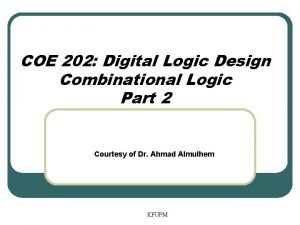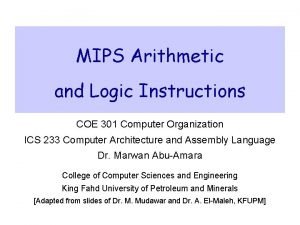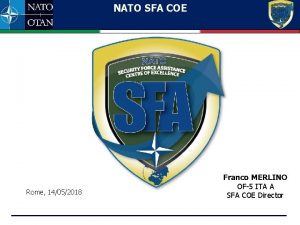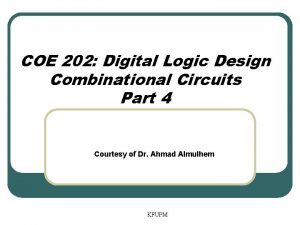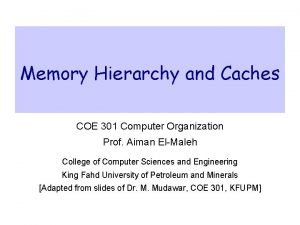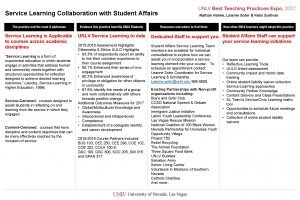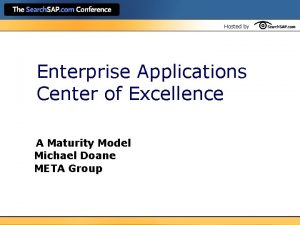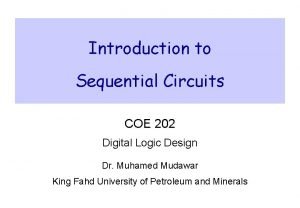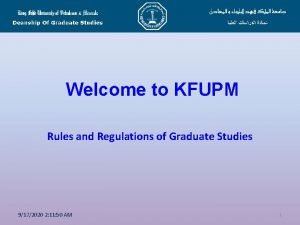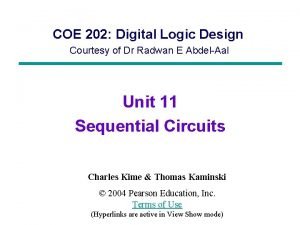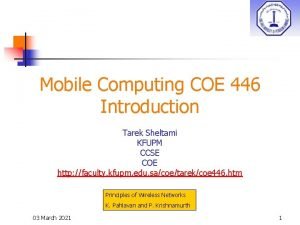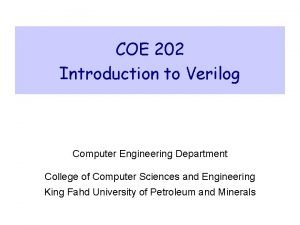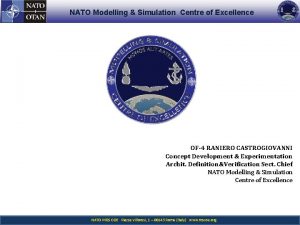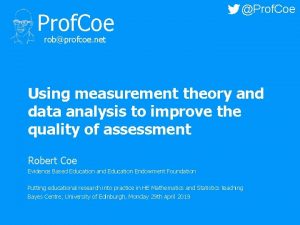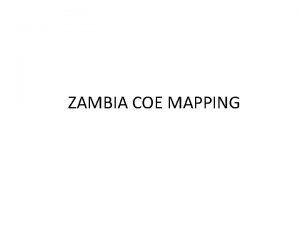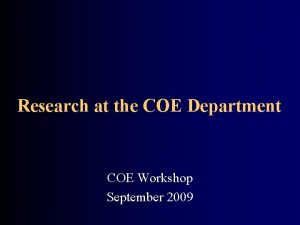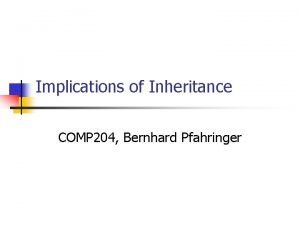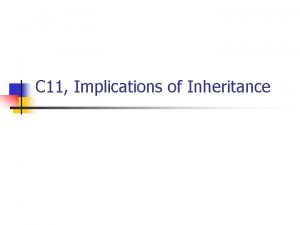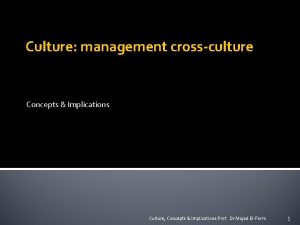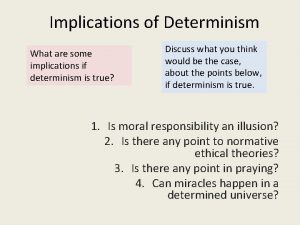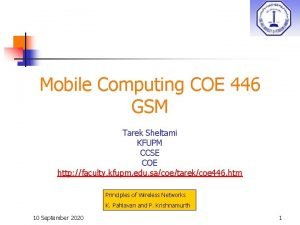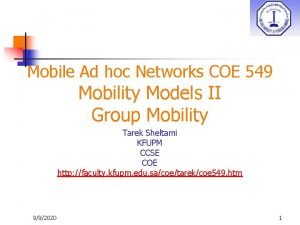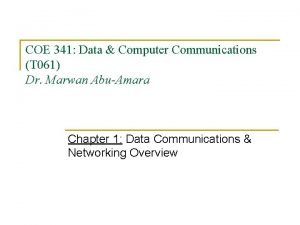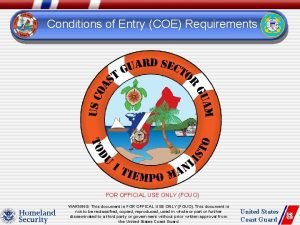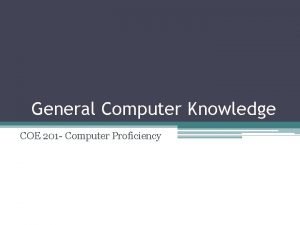THE IMPLICATIONS ON COE 1 THE IMPLICATIONS ON



























- Slides: 27

THE IMPLICATIONS ON COE 1

THE IMPLICATIONS ON COE § Line 1: indicates the parameters set by Treasury. § Line 2: indicates the cost of the implementation only the inflationary % of the Parameters. § Line 3: indicates the additional pay progression. § Line 4 -5: indicates the additional pay progression increase for Educators in 2018/19 and 2019/20. § Line 6: indicates the costs of the School Safety project. § Line 7: indicates the total cost of the Treasury Guidelines. § Line 8: indicates the Total Compensation as per 2020/21 MTEF. § Line 9: indicates the Reprioritisation of the 2020/21 MTEF. § Line 10: indicates the budget for the School Safety project. § Line 11: indicates the shifting of funds from Compensation to other items. § Line 12: indicates the total before treasury adjustments to the MTEF. § Line 13: indicates the Compensation treasury adjustments to the MTEF. § Line 14: indicates the Total Compensation after adjustments. § Line 15: indicates the Compensation i. r. o Conditional grants. § Line 16: indicates the Compensation excluding Conditional Grant funding. 2 § Line 17: indicates the shortfall/ surplus over the MTEF.

TURNAROUND STRATEGY TO REDUCE SHORTFALL IN COE • This strategy entailed addressing inefficiencies in the appointment of temporary educators& leave management • Reduce transfers to Education Training and Development Practices Sector Education and Training Authority (ETDP SETA). • The strategy also included managing the Personnel Provisioning Norm (PPN) in schools, where there are excess educators, based on the school enrolment. • The approach of deploying surplus educators to posts that become vacant, lead to a reduction in the number of surplus educators. • There were 828 surplus educators at the beginning of 2019 and this reduced to 206 realising a saving of approximately R 286 million. • This strategy will continue over the 2020/21 MTEF • It is anticipated that any savings in compensation will be redirected to offset pressures in staff exit costs. 3

OTHER TURNAROUND STRATEGIES • • • Reduction of Debts Control Overtime Control Travel and Subsistence Audit unused buildings /schools Reduce building leases Audit of fleet costs 4

PROGRAMMES 5

ECONOMIC CLASSIFICATION 6

PERSONNEL NUMBERS 7

EMPLOYEE NUMBERS FOR 2020 -21 8

INFRASTRUCTURE 9

CONDITIONAL GRANTS 10

COST DRIVERS 11

COMPENSATION 12

COMPENSATION FOR EMPLOYEES AGAINST THE TOTAL BUDGET • The table above indicates the percentage of COE that is against the total budget • The acceptable benchmark for COE to the total budget is 80% • The Department exceeded this for the 2019/20 financial year by 5% and in the MTEF by 5% (this is inclusive of Conditional Grants) • The situation worsens when conditional grants are removed from total budget • The Department is now only left with approximately 9% for operational expenditure • The low transfers to schools leads to an intergovernmental cash flow crisis where schools cannot pay local municipalities their domestic accounts fully. 13

NORMS AND STANDARDS 14

DIFFERENCE BETWEEN NATIONAL RECOMMENDATION AND PROVINCIAL AFFORDABILITY 1) 2) 3) Column one (1) is the recommendation by National for the per Capita per learner Column six (6) indicates what the Province can afford per learner Column seven (8) shows the difference of R 1 137 billion 15

POVERTY INDEX 1) 2) 3) Column two (2) is the National recommendation of the % of learners that must be in a certain quintile for no fee learners In adding Q 1, 2 & 3 National recommends that 65. 5% of learners must be no fee paying DOE provides for 79, 5 % of the no fee paying learners which is 14, 0% above the recommendation by National 16

NO FEE PAYING LEARNERS 1) The above table shows that DOE has 349 809 more no fee paying learners 2) The cost to the Department is an additional is R 334 067 million 3) This then reduces the gap to R 803 101 million (R 1 137 168 – R 334 067 million) excluding contestations. 4) Further the Department assists schools who cannot afford to fully pay their domestic accounts at cost of approximately R 70 million a year 5) This then reduces the gap to R 733 101 million 6) How would the Department narrow the GAP in the MTEF 17

PROPOSED SOLUTIONS 1) The proposed solution would be to increase the per capita per child by 5% in 2020 -21 at a cost of R 108 million or 10% at a cost of R 216 million 2) A similar exercise to be done for the 2021 -22 and 2022 -23 financial years 3) This will be dependent on other budget pressures that the Department would have to mange, as indicated the following slides 18

BUDGET PRESSURES 19

BUDGET PRESSURES • The Norms and Standards Public Ordinary schools is being funded at R 1. 1 billion below National recommendation where quintile 1, 2 and 3 are receiving R 955 instead of R 1. 466 per learner. This affects the procurement of Textbooks, Stationery and payment of Domestic accounts (which is causing schools not to pay municipalities) • Learner Transport currently being provided for has a shortfall of R 130 million. There are currently 456 buses contracted to transport 58 908 learners to and from school in the province of Kwa. Zulu-Natal. • However, considering the fact that a normal bus carries about 85 passengers, the current fleet is supposed to be carrying about 42 945 learners, which leaves the balance of about 15 963 learners, which is an estimated overload requiring an additional 187 buses. • The overall shortfall is approximately 117 248 learners who have applied but are not benefitting, the estimated figure of R 1. 4 billion per annum. 20

BUDGET PRESSURES • The Migration of function from DSD to DBE with the intention of having fully qualified educators in this sector. • Currently the cost of 5200 Grade R practitioners (both qualified and unqualified) is R 405 million • There are discussions to pay the Grade R practitioners a full salary of an REQV 14 educator at a cost of R 279 000 per annum • This will cost the Department a further R 1. 2 billion which needs to be found within its own baseline • The cost of the implementation of the Public School Safety Volunteer Programme will cost the Department R 45 414 000 (Phase 1), R 44 451 192 (Phase 2), R 189 998 172 (Phase 3) a Total: R 279 863 364 in the MTEF • The Norms for Grade R is expected to be paid fully as a Grade One learner in the MTEF. Therefore for 2021 it would cost an additional R 116 million if implemented 21

PRIORITIES OF THE 6 TH ADMINISTRATION • Migration of ECD from DSD to DBE ( 0 -4 Year old ) - Unfunded • Three-streams policy – coding, robotics & ICT roll-out – Unfunded • Infrastructure with emphasis on sanitation, eradication of Pit Latrines – Not fully funded as yet • School safety and social cohesion programme - Unfunded • Strengthening assessment and accountability – Not fully funded • Improving foundational skills – reading with meaning, writing and counting – Unfunded • Decolonisation of education through promotion of African languages – Unfunded • Pro-poor policies to cover learners with special needs – Unfunded • 4 th Industrial revolution initiatives - Unfunded 22

PRIORITIES OF THE 6 TH ADMINISTRATION • Second chance Matric Programme • Bounce Back – Matric Intervention • Content and methodology workshops • Rehabilitation and refurbishment of existing schools • Top up of obsolete furniture and tools of trade in schools and administrative offices • Building leases • Section 14 schools • Maritime, Technical and Agricultural schools • Jika Imfundo (PILO) • MST & ICT top up (including Operation Phakisa) • ELITS – Library material • School Sport, Arts and Youth • Upgrade and maintenance of IT infrastructure • Unfunded wage agreements, housing and medical aid allowance costs 23

PRIORITIES For the 2020/21 MTEF the following priorities were submitted a) E-Learning b) Learner Transport No funding was provided in 2019/2020 financial year 24

CONCLUSION That ELRC notes: a) The required growth for COE for the 2020/21 MTEF – which the department must fund within its baseline b) The inability to increase the Norms and Standards to the Nationally suggested rates recommended c) The implementation of the Turnaround Strategies. 25

THANK YOU 26

QUESTIONS 27
 Digitalstorytelling coe uh edu
Digitalstorytelling coe uh edu Khalil coe
Khalil coe Coe 202
Coe 202 Richard murray coe
Richard murray coe Mips mult
Mips mult Sfa coe
Sfa coe Coe 202
Coe 202 Coe 301 kfupm
Coe 301 kfupm Coe 202 unlv
Coe 202 unlv Erp coe
Erp coe Coe 202
Coe 202 Graduate studies kfupm
Graduate studies kfupm Conditional move instruction
Conditional move instruction Coe 202
Coe 202 Coe 202
Coe 202 Voltage coe
Voltage coe Coe 202
Coe 202 Coe kfupm
Coe kfupm Coe 202
Coe 202 M&s coe
M&s coe 202
202 Coe 301
Coe 301 Coe 301
Coe 301 Coe logic
Coe logic Nato ensec coe
Nato ensec coe Robert coe lesson observations
Robert coe lesson observations Mudawar
Mudawar Bmsce coe
Bmsce coe


